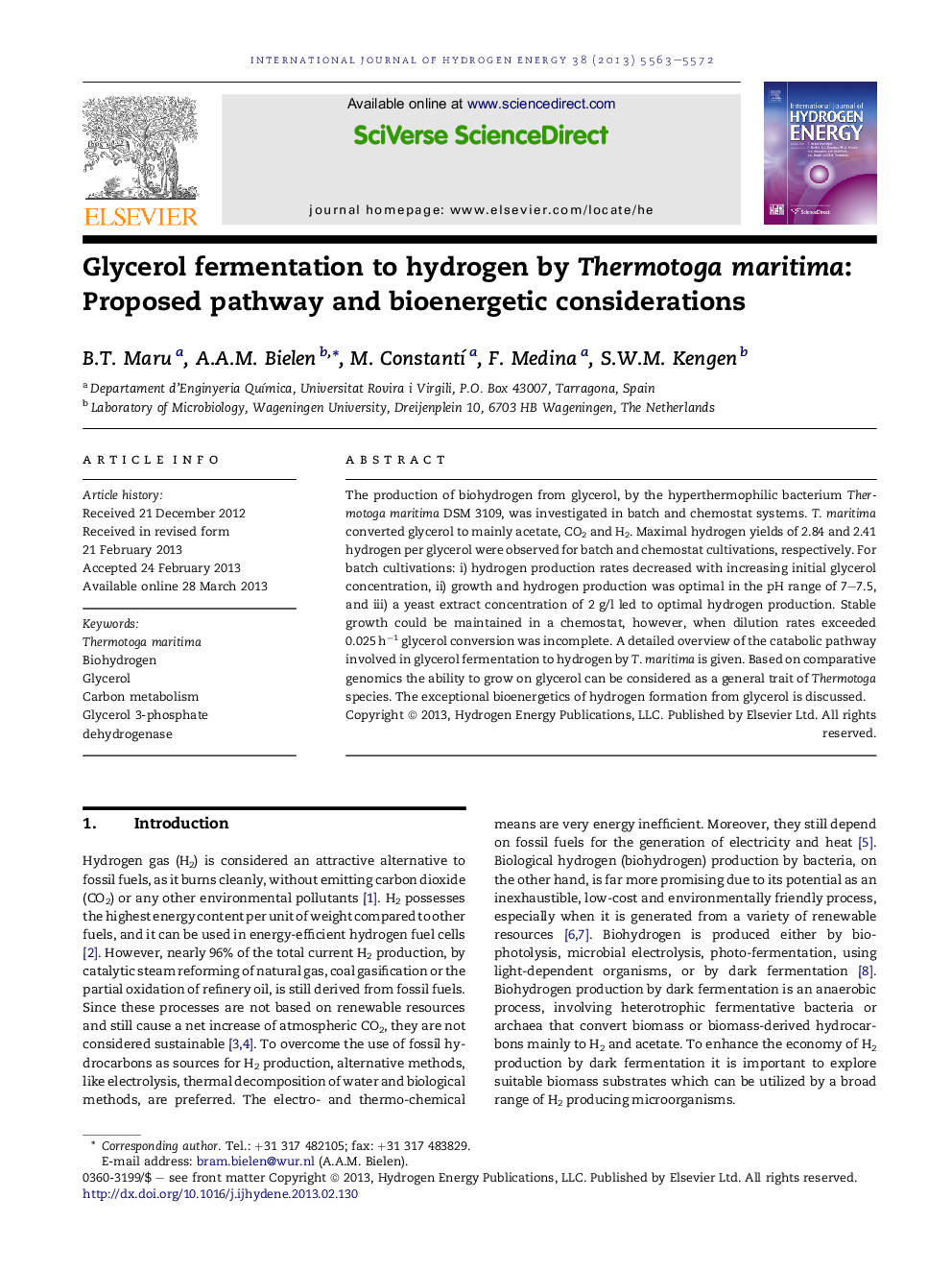| Article ID | Journal | Published Year | Pages | File Type |
|---|---|---|---|---|
| 1281665 | International Journal of Hydrogen Energy | 2013 | 10 Pages |
•Glycerol fermentation by T. maritima was studied in batch and chemostat systems.•H2 was produced with a maximum yield of ∼2.8 mol H2 per mol glycerol.•A glycerol fermentation pathway for T. maritima is proposed.•All Thermotoga spp. are proposed to be able to grow on glycerol.•Bioenergetics suggest involvement of reversed electron flow in glycerol conversion.
The production of biohydrogen from glycerol, by the hyperthermophilic bacterium Thermotoga maritima DSM 3109, was investigated in batch and chemostat systems. T. maritima converted glycerol to mainly acetate, CO2 and H2. Maximal hydrogen yields of 2.84 and 2.41 hydrogen per glycerol were observed for batch and chemostat cultivations, respectively. For batch cultivations: i) hydrogen production rates decreased with increasing initial glycerol concentration, ii) growth and hydrogen production was optimal in the pH range of 7–7.5, and iii) a yeast extract concentration of 2 g/l led to optimal hydrogen production. Stable growth could be maintained in a chemostat, however, when dilution rates exceeded 0.025 h−1 glycerol conversion was incomplete. A detailed overview of the catabolic pathway involved in glycerol fermentation to hydrogen by T. maritima is given. Based on comparative genomics the ability to grow on glycerol can be considered as a general trait of Thermotoga species. The exceptional bioenergetics of hydrogen formation from glycerol is discussed.
